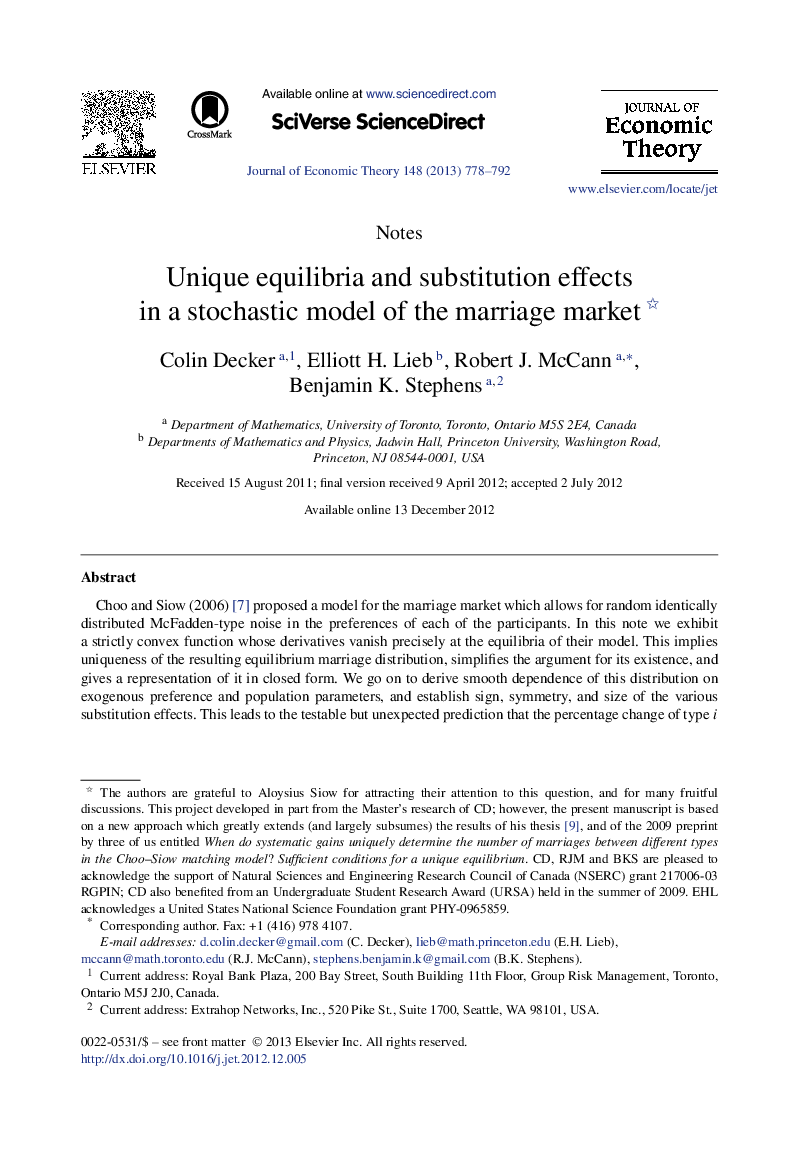| Article ID | Journal | Published Year | Pages | File Type |
|---|---|---|---|---|
| 956942 | Journal of Economic Theory | 2013 | 15 Pages |
Choo and Siow (2006) [7] proposed a model for the marriage market which allows for random identically distributed McFadden-type noise in the preferences of each of the participants. In this note we exhibit a strictly convex function whose derivatives vanish precisely at the equilibria of their model. This implies uniqueness of the resulting equilibrium marriage distribution, simplifies the argument for its existence, and gives a representation of it in closed form. We go on to derive smooth dependence of this distribution on exogenous preference and population parameters, and establish sign, symmetry, and size of the various substitution effects. This leads to the testable but unexpected prediction that the percentage change of type i unmarrieds with respect to fluctuations in the total number of type j men or women turns out to form a symmetric positive-definite matrix rij=rjirij=rji, and thus to satisfy bounds such as |rij|⩽(riirjj)1/2|rij|⩽(riirjj)1/2.
